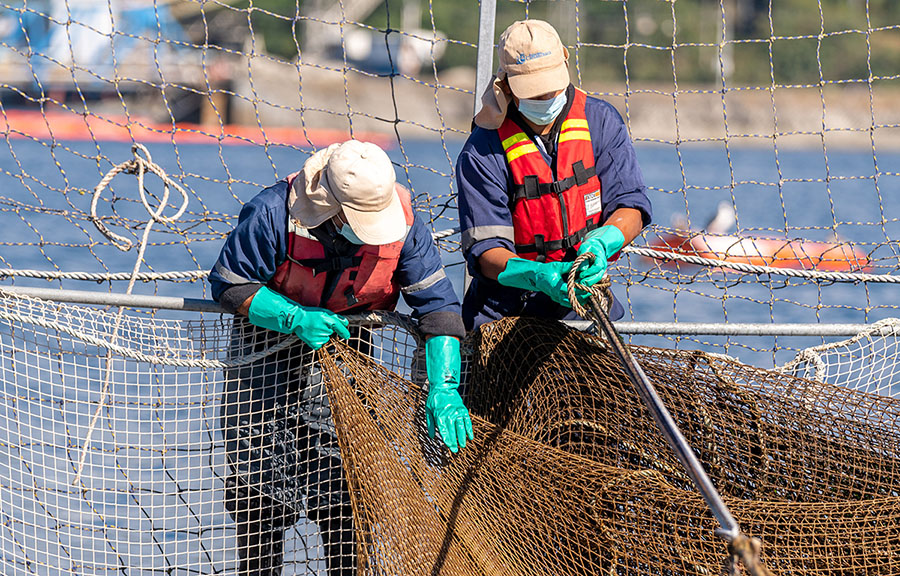Chile’s National Fisheries and Aquaculture Service (Sernapesca) has reported a new harmful algal bloom event in the country's southern Aysén region that has already caused mortality impacting over 2,800 metric tons (MT) of salmon.
On 2 January, Sernapesca reported an algal bloom northeast of Isla Victoria in Chile’s Aysén region. The event, the authority said, is impacting salmon farms in the ACS-22B Salmonid Concessions Group, where salmon-farming firm Blumar has had to activate contingency plans due to the presence of the microalgae Pseudochatonella spp.
Sernapesca added that AquaChile has also seen impacts at its Melchor 7 Center due to the same algae. All told, across the two farming areas, there has been 2,854 MT worth of mortality.
“From the logistics field, three high seas fishing vessels – Erika, Bronco and Quilpolemu – are carrying out work to extract salmon mortality from the farming center,” Sernapesca Regional Director Juan Carlos Orellana said in a release. “Additionally, there is support from the Mariela and Chelín barges.”
Both Atlantic and coho salmon are suffering from the negative effects of the algal bloom, Orellana said.
“At Sernapesca, we have been supervising compliance with the contingency plans of the affected companies and the withdrawal of mortality that the companies themselves must do,” he said. “Mortality is being taken for final disposal to reduction plants. We will maintain surveillance of these and the surrounding [concession groups] since the centers in these areas continue to report the presence of the microalgae daily.”
Soon after news of the algal bloom emerged, Sernapesca also announced that salmon farmer Salmones Camanchaca reported a salmon escape at its San José collection center, located in the Canal Caicaen sector. The escape, Salmones Camanchaca reported, comprises 2,168 specimens of Atlantic salmon. Sernapesca officials confirmed that a ruptured fish tank was the main cause of the event but also stated that the firm has made progress in recapturing the escaped salmon.
"We will also maintain inspections to ensure compliance with the contingency plan by the company, which mainly involves the recapture of the fish and their final disposal in reduction plants since by losing traceability, the salmonids cannot be destined for processing plants for human consumption,” Sernapesca Los Lagos Regional Director Branny Montecinos said.
Salmones Camanchaca reported to local media outlet Salmonexpert that the escape was the result of an alleged intentional criminal attack on the plant. Due to a third party – which has not yet been identified – both fish tanks and sea nets suffered breaches, the company said.
As of 4 January, 16 percent of the salmon that escaped have been recovered, and the company reported it will continue to carry out recapture and recovery work.
“The first thing was to timely activate all the necessary procedures to deal with the emergency and stay coordinated with the authority; the second thing was to file a complaint with the Ministry Public to account for this crime of which we have been victims,” Salmones Camanchaca Technical and Sustainability Manger Alfredo Tello said.
The company said it will cooperate with authorities to discover who was behind the alleged deliberate sabotage.
Photo courtesy of Salmones Camanchaca







